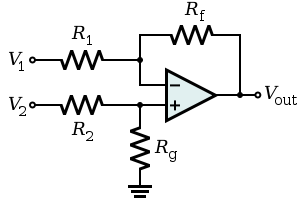substitute
Well-known member
http://www.forsselltech.com/media/attachments/8chsum_1.pdf
http://www.twin-x.com/groupdiy/albums/userpics/balancedmixnetwork.pdf
So the Manley 16x2 mixers are almost exactly what I'm looking for, 'cept they cost $8000 and I only need maybe 10 channels. Either of the forssell or NYD designs seem easy and affordable to build and almost get me where I'm trying to go. The only thing that's missing for me are sends, preferably two. I've attached a little mock up drawing, it's a clip from the forssell schematic; in red I've added a "send pot" after the fader and before the pan pot. Some questions...
-Is this the right track at all?
-What value should the "send pot" be
-Should it be before or after the buffer amp
-as for the buffer amp, any ol opamp?
as always, thanks
http://www.twin-x.com/groupdiy/albums/userpics/balancedmixnetwork.pdf
So the Manley 16x2 mixers are almost exactly what I'm looking for, 'cept they cost $8000 and I only need maybe 10 channels. Either of the forssell or NYD designs seem easy and affordable to build and almost get me where I'm trying to go. The only thing that's missing for me are sends, preferably two. I've attached a little mock up drawing, it's a clip from the forssell schematic; in red I've added a "send pot" after the fader and before the pan pot. Some questions...
-Is this the right track at all?
-What value should the "send pot" be
-Should it be before or after the buffer amp
-as for the buffer amp, any ol opamp?
as always, thanks




